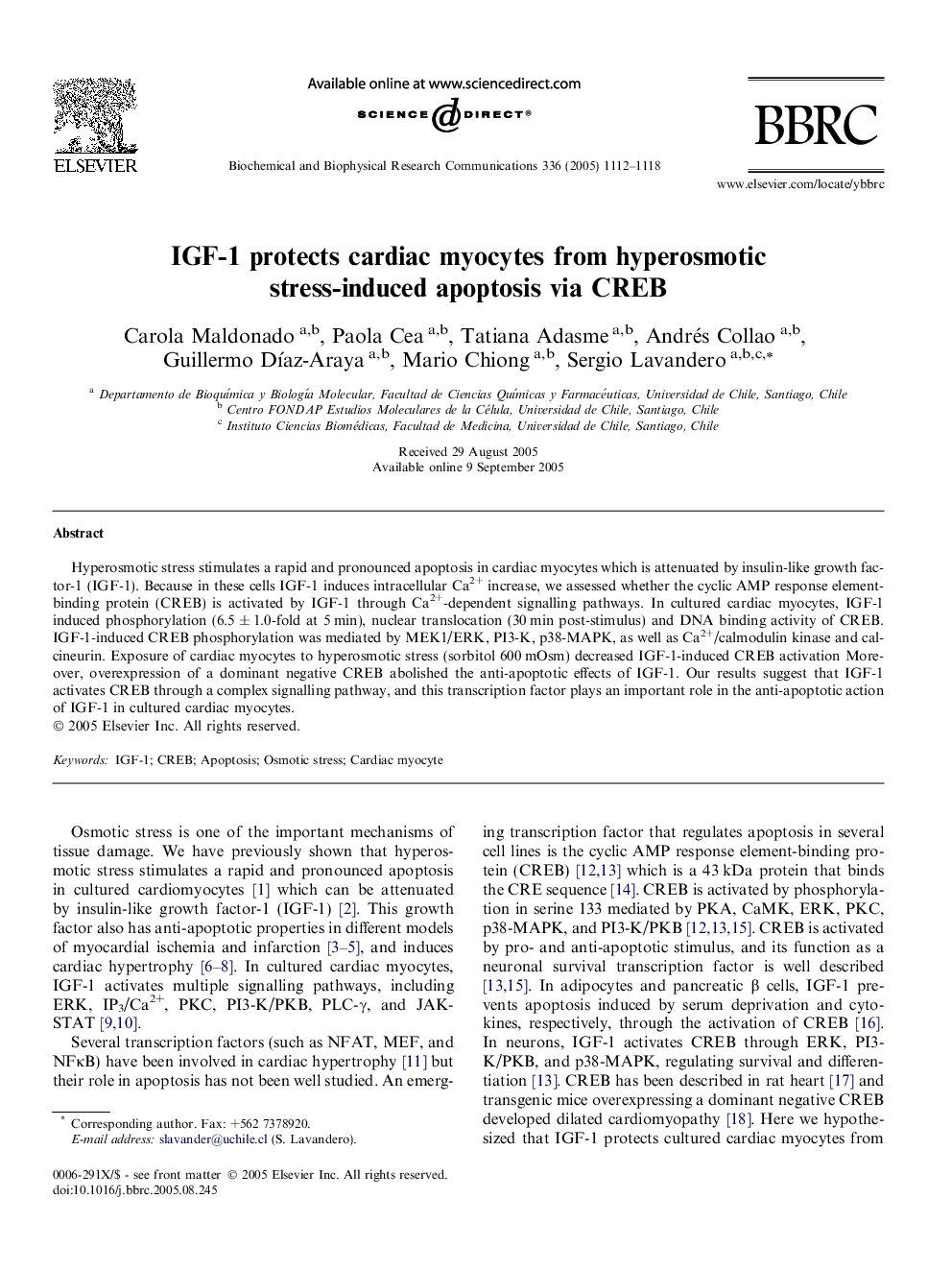| Article ID | Journal | Published Year | Pages | File Type |
|---|---|---|---|---|
| 10767758 | Biochemical and Biophysical Research Communications | 2005 | 7 Pages |
Abstract
Hyperosmotic stress stimulates a rapid and pronounced apoptosis in cardiac myocytes which is attenuated by insulin-like growth factor-1 (IGF-1). Because in these cells IGF-1 induces intracellular Ca2+ increase, we assessed whether the cyclic AMP response element-binding protein (CREB) is activated by IGF-1 through Ca2+-dependent signalling pathways. In cultured cardiac myocytes, IGF-1 induced phosphorylation (6.5 ± 1.0-fold at 5 min), nuclear translocation (30 min post-stimulus) and DNA binding activity of CREB. IGF-1-induced CREB phosphorylation was mediated by MEK1/ERK, PI3-K, p38-MAPK, as well as Ca2+/calmodulin kinase and calcineurin. Exposure of cardiac myocytes to hyperosmotic stress (sorbitol 600 mOsm) decreased IGF-1-induced CREB activation Moreover, overexpression of a dominant negative CREB abolished the anti-apoptotic effects of IGF-1. Our results suggest that IGF-1 activates CREB through a complex signalling pathway, and this transcription factor plays an important role in the anti-apoptotic action of IGF-1 in cultured cardiac myocytes.
Related Topics
Life Sciences
Biochemistry, Genetics and Molecular Biology
Biochemistry
Authors
Carola Maldonado, Paola Cea, Tatiana Adasme, Andrés Collao, Guillermo DÃaz-Araya, Mario Chiong, Sergio Lavandero,
